iPhone 13 Brings Evolutionary Improvements: A15 Bionic Chip, Improved Cameras, and Better Displays
When it came to the iPhone, Apple did exactly what everyone expected at its inscrutably named “California Streaming” event, introducing the iPhone 13, iPhone 13 mini, iPhone 13 Pro, and iPhone 13 Pro Max, all powered by the new A15 Bionic chip. With the exception of slightly rearranged rear cameras and a smaller front notch, the industrial design and form factor of each model remain much the same as the iPhone 12 models from last year, with squared-off edges and a variety of colors. They’re available for pre-order now and will begin shipping on 24 September 2021.
As with last year’s iPhone announcement, Apple’s pre-recorded presentation was a firehose of detail and technical specs, far too much to convey in a coherent and useful fashion here. Instead of “speeds and feeds,” we’re once again going to focus on the important changes you need to know if you’re considering upgrading to one of these iPhones. For the rest of the details, check out these pages:
- iPhone 13 and iPhone 13 Pro main pages
- iPhone 13 and iPhone 13 mini tech specs
- iPhone 13 Pro and iPhone 13 Pro Max tech specs
- iPhone comparison tool
- Apple trade-in values and carrier deals
So what should we focus on? The cameras, of course.
It’s All about the Cameras
By now, everyone should realize that iPhones are more cameras than phones. With the iPhone 13 lineup, Apple devoted much of its engineering effort to improving both the cameras and the computational capabilities that enable impressive technologies like the new Cinematic mode.
The iPhone 13 and iPhone 13 mini still have dual-camera systems boasting a new wide camera with larger 1.7 µm pixels and sensor-shift optical image stabilization that was previously unique to the iPhone 12 Pro Max. They combine to provide improvements in low-light photos and videos. The ultra-wide camera offers a faster sensor than before.
A faster 16-core Neural Engine and new image signal processor in the A15 Bionic chip make possible three new computational photography features: Photographic Styles, Smart HDR 4, and Cinematic mode. Photographic Styles enable you to customize photographic preferences (like vibrancy) that the camera system then uses for future photos in real-time—it’s a little like automatically applying custom filters via a heavy dose of machine learning. Smart HDR 4 provides improved color, contrast, and lighting for each subject in a group photo.
Finally, Cinematic mode is essentially like Portrait mode for video, albeit only 1080p video at 30 frames per second, not the 4K video that’s otherwise possible. It automatically applies a cinematic technique called “rack focus,” the practice of changing the lens focus during a shot to emphasize different people or objects. Cinematic mode changes the focus automatically during shots, even in response to a person looking in a different direction or someone walking into the scene. You can change the focus during (tap to refocus, tap twice to refocus and lock on a person or moving object) or even after capture, and you can adjust the level of bokeh to edit the depth-of-field effect in Photos and iMovie for iOS (coming soon to iMovie for macOS and Final Cut Pro). As with most of Apple’s visually focused technologies, it demos incredibly well; the question will be if it’s useful in real-world usage.
The iPhone 13 Pro and iPhone 13 Pro Max take the camera improvements even further. As with last year’s models, they feature triple-camera systems with wide, ultra-wide, and telephoto cameras, plus an A15 Bionic with a 5-core GPU (up from the 4-core GPU in the lower-end models). All three cameras receive new sensors and lenses, complete with sensor-shift optical image stabilization.
The wide camera has larger 1.9 µm pixels to reduce noise and support faster shutter speeds, and its larger ƒ/1.5 aperture improves performance even more in low-light conditions. The ultra-wide camera has a much wider ƒ/1.8 aperture and a new autofocus system that also provides sharper details in low-light shots. More interesting for many of us are the improvements in macro photography that come from the new ultra-wide camera—you can now capture tiny subjects with a minimum focus distance of 2 centimeters, either as still images or in video, including Slo-mo and Time-lapse. Finally, the new 77 mm telephoto camera provides 3x optical zoom in, enabling the system as a whole to have a 6x optical zoom range when combined with the 2x optical zoom out.
All four models of the iPhone 13 have new front-facing TrueDepth cameras shoehorned into a smaller front notch. They’re 12 megapixels, have an ƒ/2.2 aperture, and support all sorts of Apple photo and video technologies, like Portrait mode, Portrait Lighting, Night mode, Deep Fusion, Smart HDR 4, and so on. The main difference between the front-facing cameras in the low-end and high-end models is that only the iPhone 13 Pro and iPhone 13 Pro Max support Apple ProRAW files and ProRes video recording.
Other Stuff That’s New and Improved
It would be unfair to imply that the only important changes in the iPhone 13 models are the cameras, but as you’ll see in the list of other improvements below, the rest aren’t likely to change your life. They’re all just better—you’ll enjoy better performance, better screens, better battery life, and better 5G. And that’s fine.
- A15 Bionic: Apple says the A15 Bionic is the fastest smartphone chip ever, with performance up to 50% faster than the competition. (Interestingly, Apple didn’t compare it to the A14 Bionic, suggesting that the A15 isn’t that much faster.) It provides a 6-core CPU with two high-performance cores and four high-efficiency cores for general computation, has either a 4-core or 5-core GPU for graphics, and provides a 16-core Neural Engine for machine-learning tasks. It’s based on 5-nanometer technology and has nearly 15 billion transistors. That’s shorthand for saying that the A15 Bionic’s performance is what makes the magic possible.
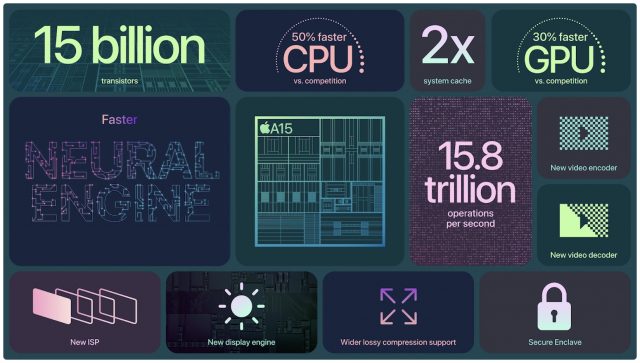
- Improved displays: The iPhone 13 and iPhone 13 mini come with an improved Super Retina XDR OLED display that’s brighter and has a higher contrast ratio for true blacks, all while being more power-efficient. The iPhone 13 Pro and iPhone 13 Pro Max up that with an even brighter Super Retina XDR display that includes the adaptive frame rate ProMotion technology from the iPad Pro. ProMotion dynamically changes the screen refresh rate as needed from 10 Hz to 120 Hz, either preserving battery life or offering smooth video for games or movies.
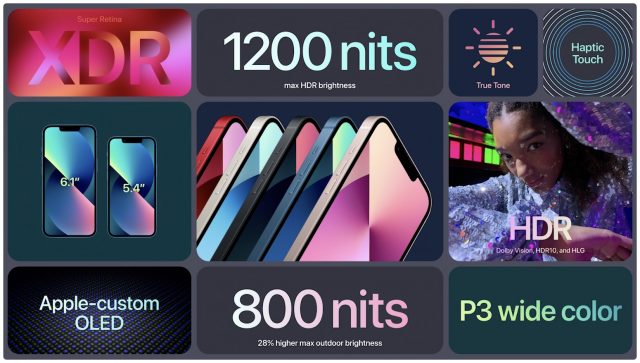
- Longer battery life: Thanks to more power-efficient components, larger batteries, and technologies like ProMotion and Smart Data mode (which switches to LTE when 5G isn’t needed), Apple says battery life on the iPhone 13 models is significantly better than on the iPhone 12 models. The iPhone 13 mini and iPhone 13 Pro offer 1.5 hours more battery life than their predecessors, and the iPhone 13 and iPhone 13 Pro Max provide 2.5 hours more than theirs.
- 5G in more countries: Although 5G isn’t yet the game-changer that the industry wants it to be, at least in the United States, Apple keeps enhancing its support. The iPhone 13 lineup supports more 5G bands, which will provide broader coverage and faster performance where the local infrastructure supports it. By the end of 2021, Apple says 5G support on the iPhone will double worldwide, with over 200 carriers in 60 countries and regions.
- MagSafe: There’s nothing new here on the iPhone side, but Apple introduced a new $59 iPhone Leather Wallet with MagSafe that magnetically attaches to the back of the iPhone and—this is the neat part—enables you to locate it using the Find My network. It’s available in a variety of colors.
Pricing and Availability
As with previous years, Apple has kept some older models available for sale, albeit in limited configurations. That provides a coherent ramp for price points, ensuring that most people who want an iPhone can find one that fits their budget.
| Model | 64 GB | 128 GB | 256 GB | 512 GB | 1 TB |
| iPhone SE | $399 | $449 | – | – | – |
| iPhone 11 | $499 | $549 | – | – | – |
| iPhone 12 mini | $599 | $649 | $749 | – | – |
| iPhone 12 | $699 | $749 | $849 | – | – |
| iPhone 13 mini | – | $699 | $799 | $999 | – |
| iPhone 13 | – | $799 | $899 | $1099 | – |
| iPhone 13 Pro | – | $999 | $1099 | $1299 | $1499 |
| iPhone 13 Pro Max | – | $1099 | $1199 | $1399 | $1599 |
It’s worth noting that all the iPhone 13 models start with 128 GB of storage, whereas last year’s iPhone 12 and iPhone 12 mini started at 64 GB. Last year also brought a $100 price jump for the iPhone 12 over the iPhone 11. This year, Apple retained the bottom price point for its new models but increased storage to 128 GB. Buying a 128 GB iPhone 12 last year would have cost you $849, whereas this year, the comparable iPhone 13 is $799. In other words, after raising the iPhone 12 price by $100, Apple dropped the iPhone 13 price by $50.
Also note that the iPhone 13 Pro and iPhone 13 Pro Max now come in a 1 TB configuration. It’s a bit pricey, but if you’re shooting video, the extra storage will no doubt be welcome. I imagine many professional photographers and videographers won’t even blink at buying that configuration.
The iPhone 13 comes in pink, blue, midnight (dark gray), starlight (silvery gold), and (PRODUCT)RED. Sadly, there’s no purple, but Apple didn’t release the purple iPhone 12 until the following year (see “Apple’s Spring Loaded Appetizers: Apple Card Family, Podcast Subscriptions, and a Purple iPhone,” 20 April 2021).
The iPhone 13 Pro comes in graphite, gold, silver, and sierra blue.
As noted before, you can pre-order the iPhone 13 models now, and the first deliveries will arrive on 24 September 2021.
Upgrade Decisions
Overall, the iPhone 13 models feel evolutionary rather than revolutionary. As with all new iPhones, there’s no question that these are the best iPhones Apple has ever made. And yes, they feature a faster A15 Bionic chip, improved cameras, better displays, longer battery life, and more 5G bands. But they probably won’t radically change the experience of owning an iPhone for you as the redesign of the iPhone 12 or the addition of MagSafe might have last year. That’s not a bad thing—the iPhone experience is already pretty darn good—but it does inform upgrade decisions.
I see two possible upgrades from an iPhone 12 model. If you want to switch from a larger iPhone 12 model to the iPhone 13 mini for a more hand- and pocket-friendly form factor, that’s a good reason, particularly since rumors suggest that the mini form factor won’t be back next year in the iPhone 14. Also, if you have an iPhone 12 or iPhone 12 mini and want a better camera or longer battery life, I could see an upgrade to an iPhone 13 Pro or iPhone 13 Pro Max for significantly better cameras and battery life. But I wouldn’t recommend going from an iPhone 12 model to the equivalent iPhone 13 model unless you’re in the iPhone Upgrade Program.
What about upgrading from the iPhone 11 era? With that, we’re into the two-year timeframe, so it’s possible, even likely, that the improved performance, better cameras, and longer battery life make that decision easier. For instance, I have an iPhone 11 Pro that has served me well. If I didn’t write about Apple professionally, I’d stick with it, but since it is beneficial to me to stay up to date with Apple’s technologies (and because I take a lot of macro photographs), I’ll probably upgrade to an iPhone 13 Pro.
Once you get older or slower than the iPhone 11 series, the decision gets easier because the jump in performance and overall capabilities will be so great. For another example, Tonya has a second-generation iPhone SE that she bought in April 2020 and couldn’t bring herself to replace with the far more desirable iPhone 12 mini just seven months later (see “Large Size of Apple’s New Low-Cost iPhone SE Disappoints,” 15 April 2020). However, since size is one of her main complaints about iPhones, she’s thinking about trading in her iPhone SE for the iPhone 13 mini at some point.
All that said, if you have an older iPhone that’s working fine for your needs, there’s no requirement that you upgrade. Save your pennies, and next year’s iPhones will once again be the best iPhones that Apple has ever made.
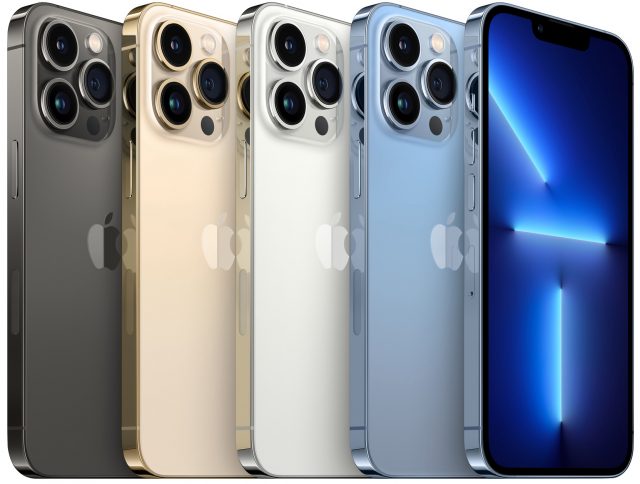
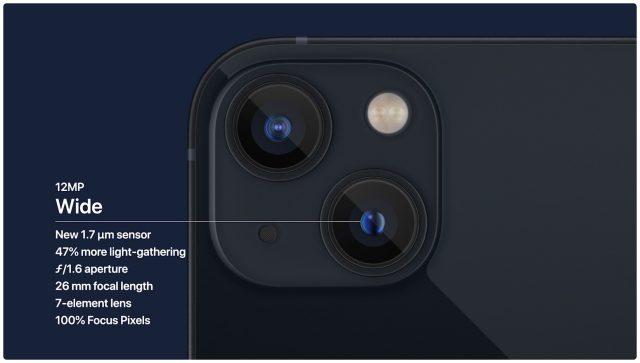

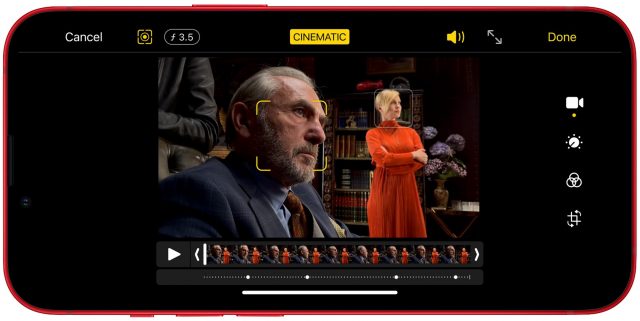
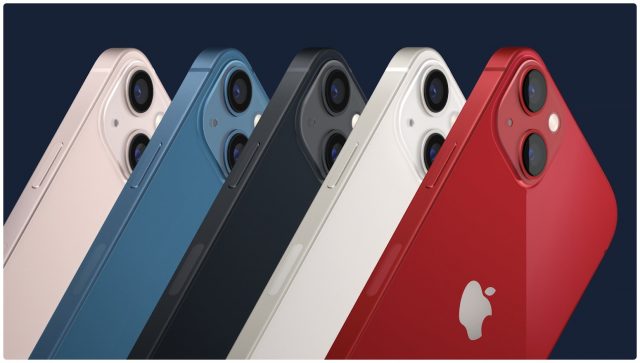
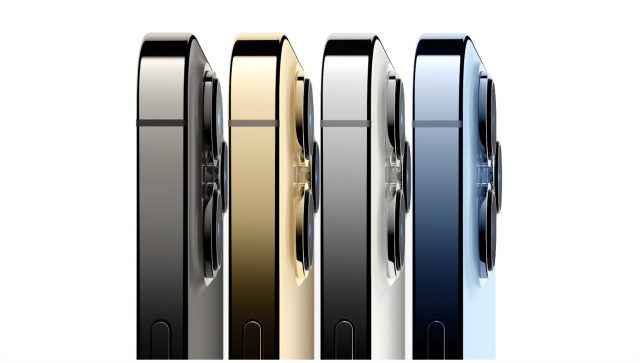
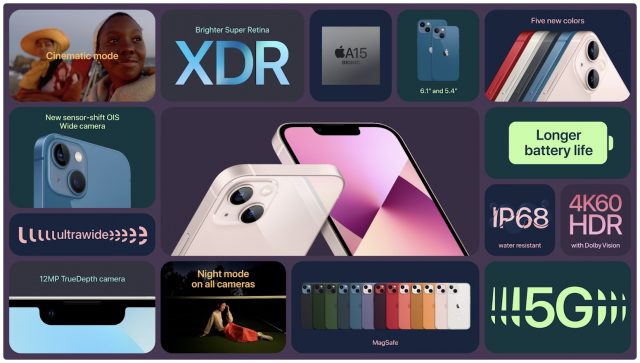
As someone who is in the iPhone Upgrade Program, I’ll probably be replacing my iPhone 12 Pro with an iPhone 13 Pro. I’m curious about case fit. The height and width specs are the same, but the new iPhone is 0.25mm deeper. If the only difference is that the camera bump is a tad more prominent, then old cases should fit. However, if the main body is thicker, the buttons have changed or moved, or the camera bump has changed or moved, then a new case could be required. Does anyone have insights?
What surprised me was the iPhone 13 Mini. This was not supposed to happen. The iPhone 12 Mini was a poor seller. It was the doom of the small format.
However, here it is! The Mini is still around.
I’m thinking that maybe it’s a good time to upgrade from my original iPhone X. The Pro’s macro and 3x optical zoom (without needing to go Pro Max for those) is attractive. I can’t get much trade-in value for my iPhone X though. And it’s still just fine, and under month-to-month warranty. But I do like taking pictures, and love macro and optical zoom.
The rumors I’d seen suggest that this year the Mini would return, but there will be no Mini next year.
For example, see this from April.
I was original planning to upgrade last year, but the 12 series just didn’t drive me to pull the trigger. If it’s true that battery life is better than the 12, I’m glad I waited to upgrade my iPhone X until this year. I’m planning to order a 13 Pro.
Yes, that’s what made me wait. I was ready to get the 12 Mini this past spring until I read that. Glad I waited. I hope sales go well and Apple reconsiders in the next couple of years. I think they marketed it poorly last year, what with the SE 2020 coming out in the spring and then the Mini announcement was delayed from the main event.
Diane
The mini will stick around. It’ll just be called SE.
I like the 13 mini because it presents absolutely no reason for me to upgrade my 12 mini. I can save those $700 and put them towards a nice vacation. If OTOH I break my 12 mini beyond AC+, I’ll just get a 13 mini and live happily ever after.
No USB-C yet? Pricing still a targeted formula created by PhDs in Marketing. (Nope, Tim , I’m not your targeted consumer…I don’t need the latest, can wait for deal on
, I’m not your targeted consumer…I don’t need the latest, can wait for deal on  12 and
12 and  6).
6).
PS: thank you Tidbits for the reviews of the Apple event!
The key features of the 13 (over the 12) for me are:
Which is great for me. I plan on replacing my old 6+. I was originally planning on upgrading to a mid-storage model (128 GB for a $750 12 mini). But now I can get that on the $700 model (13 mini).
Compared to my 6+, the 13 mini is physically smaller, but the display is only 0.1" (diagonally measured) smaller.
Would I upgrade from an 11 or 12? Probably not. But upgrading from a 6? Absolutely yes.
The only downside (for me) is that I’m going to lose Touch ID (I’ve never been a fan of Face ID). I was hoping they would put Touch ID on the power button like they did on the new iPads, but that alone isn’t enough to make me prefer an SE (which is functionally equivalent to an 11).
For me the SE 2020 was way too big, coming from the original SE. Once I compared them all in my hands, the 12 Mini was a no-brainer. I was struggling with the 128gb price, so I’m really happy I waited for the 13.
Diane
Over at Macworld, Jason Snell suggests that the A15 Bionic may not be much an improvement over the A14 Bionic, given that Apple only compared the A15 to “the competition” rather than to the A14. He’s right, and that nagged at me during the presentation, but it was so detail-packed that I forgot about it while writing.
With the worldwide chip shortage, it’s a minor miracle Apple is even producing new chips at all.
One thing I forgot to mention. Reading this article on an iPhone 12 mini, the price table got truncated on the right side. Could not pinch or scroll to read beyond the 256 GB column. That’s with vanilla Safari on the latest iOS.
Maybe, maybe not. From what I’ve read, the chip shortage is not because the factories aren’t running at capacity, but because there is more demand for silicon than ever before and the manufacturers need time to build new fabs in order to keep up.
Apple, I assume, has long-term contracts with TSMC in order to ensure that they get the chips they need. They won’t feel a crunch unless demand for phones greatly exceeds expectations (upon which they based their contracted orders).
For comparison, GPU manufacturers are getting all the chips they contracted for, but demand for their products is far greater than expectations, causing a shortage of video cards. Under normal circumstances, the chipmakers could make up the difference by using excess capacity, but there currently isn’t any excess capacity to use. But demand is starting to return to normal as people are returning to work and the gamers are finally able to get video cards.
It’s my understanding that the game console shortage is for the same reason. And that may be breaking soon - I think it is now possible to get new XBox systems. Hopefully PS5s will become available soon as well. But note that it isn’t nearly as hard to get a Nintendo Switch - their demand seems to have been in-line with expectations, so they haven’t experienced a shortage.
But note that it isn’t nearly as hard to get a Nintendo Switch - their demand seems to have been in-line with expectations, so they haven’t experienced a shortage.
And then there’s the automotive industry, which assumed car sales would be massively depressed and told the chipmakers to cut back on production. When the slump proved to be much smaller than expected, they found themselves unable to get more chips because the capacity they were using has been sold to others. Now they need to wait until those others’ contracts run out (or the new fabs come on line) before they can get their contracts back up to the quantities they require.
I think from Apple’s POV that makes sense. Regardless of what we want from an SE, to them it needs to be first and foremost inexpensive to manufacture. So back in early 2020 using the iPhone 8 case fit that bill. Had they at that time pushed for smaller form factor (using something like the 12 mini), that would have made it a much more expensive device to them.
However, in 2023 we’ll be in a very different situation. By that time, the 12/13 mini case (perhaps with minor modifications) will present a less expensive enclosure for an updated SE. They can still use 13 internals (just as the 2020 SE relied on 11 internals). And since there seems to be consensus there won’t be a 14 mini, selling what is essentially a rebranded 13 mini as the “new SE” presents no clash in their line-up. Bottom line, if somebody wants super small (as in the 12/13 mini, not as in the original SE) but inexpensive, I’d say you need to find a way to hold out for another ~18 months. Apart of course from looking at things like used/refurb 12 minis.
Maybe, but one of the reasons that the SE can remain cheaper than the current line of Face ID phones is the LCD display. Maybe Apple can get the cost of OLED down to meet SE price requirements. I’m guessing that Apple cares less about the size of the SE than they do about the cost of components and price, so if they do go Face ID with an SE (or Touch ID in the power button), it will be with something more like the XR or iPhone 11 (with their LCD displays) than the 12 Mini as a form factor.
The original SE knocked it out of the park. Small form factor, good price and some nice features.
The 2020 SE seemed like it missed the boat. It was inexpensive but just felt like a leftover. (really, it had 11 internals? I guess I forgot that but it was the SIZE I was really upset about)
Then with so many people having no idea there was a Mini on the horizon, they bought SEs in early 2020 and were hugely disappointed when the 12 Mini was announced (after the announcement). If it wasn’t for covid and not being able to touch one, I may have been in the same boat, but now and then procrastination works in my favor
Since we’ll now have 2 years of Mini’s, I agree they could wait till 2023/34 before recycling that form factor into an updated SE (does that work time wise? 2016 — 2020 — 2023… pretty close)
Or maybe the pendulum will swing away from tablets as phones and smaller phones will be “in” again.
I can’t wait for my new Mini!
Diane
I like this theory—I think you’re onto something with a future iPhone SE taking over the iPhone 12/13 mini case and internals for a few years.
Same problem on my iPhone 11 Pro. Grumble… stupid HTML tables. OK, I’ve fixed it now by wrapping the table in:
@jcenters, let’s try to remember this for the next time we do a table.
Thank you, that fixed it.
One thing that is still not nice, is that there is zero indication this is a scrollable table. Granted, that is not your fault. In general I have difficulty with this in iOS. Right now, the table gets truncated at exactly 256 GB. Here, I of course know there has to be more content to the right of that and I try to scroll. But in general, if you are not familiar with the matter, how would you ever know you’re only seeing part of it? Again, not directed at you, this is really much more a criticism of the way iOS fails to indicate there’s more content that can be reached by scrolling.
It might not be that gloomy. In terms of GPU it seems to be quite the riot.
Metal has the 13 Pro at 14216, compared to the 9123 score of the 12 Pro. Now even if we were to assume this was just due to the increased core count of the GPU (the A15 in the Pro has 5 GPU cores, one more than the 13 and 12 family), this would still have the regular 13 at +25% compared to the 12 Pro.
Extra good news is the new iPad mini has the same 5-core GPU A15 as the iPhone 13 Pro.
Yeah, this is a general problem with HTML tables and small screens. There are a variety of suggestions for how to deal with this problem, but some of them get pretty complicated.
And CPU benchmarks are in. +10%/+18% over iPhone 12’s A14 in single/multicore.
I have the iPhone X and am thinking of upgrading. But what does this “6x optical zoom” part mean?
From iPhone 13 Pro and iPhone 13 Pro Max - Apple
Is there truly 6x optical zoom?
And is the optical zoom the same on both the Pro and Pro Max?
Never mind. I get it. There is also a 2x optical zoom out, so 3 x 2 = 6.
I think they mean an overall range of 0.5x (wide) to 3x (tele). Any zoom beyond 3x is pixel manipulation, as is any zoom but 0.5, 1.0, or 3.0.
To answer this, yes. The camera systems on the Pro and Pro Max are identical with this year’s phones.
This 11 Pro user is staying put. The camera is really quite good on it and for my use cases the iPhone is perfect.
I had an original SE for nearly six years, and loved it until it died. I suspect this will go the same way.
It should be noted that the prices quoted in the article are only if you buy the phone from a carrier: AT&T, Sprint, T-Mobile, or Verizon. If you buy a phone to connect to another carrier then it is $30 higher.
To me it looks like what they did is jack up the price by $30 but then have the carriers subsidize a discount.
Maybe Consumer Cellular will also have the $30 discount? Can’t tell right now because all of the iPhones are out of stock.
Yep. It’s a pain. I have a SIM that I take from one phone to another. I don’t buy phones from a carrier or locked to a carrier. Why should I pay Apple an extra $30 for nothing?
I thought we got a $30 discount because the big carriers were going to charge us a $30 fee to change service to a new phone. (At least, AT&T does.)
I now have the answer about case fit and some discouraging information about the camera bump on the Pro modes. Some folks ordered cases early and have received them. According to tweets and pictures in this article, the bump is much larger and thus requires a bigger hole in the case. Furthermore, the rim of the camera cutout is taller, indicating that the camera block and/or the lens stick out further from the phone. The slight edge of the iPhone 12 Pro cases kept one from laying the phones flat on a surface, and the problem will be even more obvious on the 13’s. Also, it will be harder to slide the phone (with or without a case into pockets.
Yes. It’s playing loose with the pricing.
All the major carriers charge a $30 “activation fee”. If you buy a SIM-free phone, then you pay this fee as a part of the phone.
I assume this is to prevent people with existing contracts from trying to save the fee by simply transferring their SIM card to a new phone.
US carriers are the worst. Nonsense charges all of them.
I have purchased the latest and greatest iPhone every year since the iPhone 4. I always get a non-contract unlocked model even though I have been with Verizon continuously since 1988.
I was logged on at the starting gun and got a 13 Pro Max in silver with 1TB of memory. Delivery times for that model were out to mid October in the first five minutes so I will pick mine up at the only store of seven in my area that had my specific model available for a 24 September delivery.
I used to just move the sim from the old to the new model. The 12 has Verizon on the e-sim like the 11. That was a major time consumer as tech support really had to dust off their collective navels to solve the issue. The second sim is my UK O-2 chip as we travel there often since my wife is British born to Irish born parents (she is a tri-national).
The biggest change of interest to me is the ever increasing sophistication in the camera year over year. The annual processor speed up is a given, but the new optics are really amazing.
I take some of the pain off the purchase cost with the Apple 10% military discount and 3% cash back on the Apple Card. My 12 Pro Max goes to my wife who has my 11 Pro Max. They just trickle down thru her four daughters for maximum family recycling so only one “new” phone brings joy to the rest of the family.
Weird that new iphones are usually compared to last year’s iphones. It seems that most people do NOT upgrade their phones every year, so comparisons to the iphones of 2, 3, or 4 years ago would make much more sense. Is anybody aware of such more comprehensive comparisons?
(I have an iphone 8 and I am fairly happy with it although it does slow down a bit now, so I may buy an iphone 13 or maybe not )
)
I have ordered a iPhone 13 Pro to replace my iPhone 7. I have more of less placed this order sight unseen. I am a photographer who likes to use the iPhone in conjunction with my main cameras. But the iPhone images of my last photography trip were quite soft and therefore disappointing in image quality.
I borrowed someone’s iPhone 12 and did some comparisons with my iPhone 7 and soon realised I needed a new iPhone. I decided to wait for the iPhone 13. There were rather good reviews post the release and decided to spend the money without doing my usual physical examinations.
The ordering process on the Apple site was ok but the delivery options were a bit convoluted but explainable by the COVID-19 lockdowns we have in Australia. I pick it up in 5 days.
Yes, I am aware of that but it’s not a particularly user-friendly format
If you go to that page there are pop-down menus where you can select the iPhone 8 instead of one of the iPhone 13’s so you should be able to see what you are looking for.
Gsmarena isn’t bad.
Phonearena is good for visual/size comparisons.
I guess Cinematic mode does indeed demo better than it performs in real life. Joanna Stern put it through its paces.
And Jason Snell explains how that new iPhone Leather Wallet works with Find My.
My “Wait & See” attitude changed a bit when I ran my 6s thru the wash/rinse/spin cycle of our washing machine! I disconnected the battery but I think it may have tried to answer a call before I cracked the case open. Have it sitting in a nice, warm heating pad and hoping it will start up in a few days. Ordered the 13 mini Red this morning but I’ll be without a phone until it arrives or the 6 manages to restart.
I disconnected the battery but I think it may have tried to answer a call before I cracked the case open. Have it sitting in a nice, warm heating pad and hoping it will start up in a few days. Ordered the 13 mini Red this morning but I’ll be without a phone until it arrives or the 6 manages to restart. 
Ouch - poor phone! You may have been better off going to a store Friday. My pre-order got so messed up that’s what I am going to have to do (and I doubt I’ll ever pre-order again)
Diane
Oh Mann! Check out these photos from the iPhone 13 Pro:
An article was published today on the Six Colors site summarizing the changes to expect if upgrading to the iPhone 13 or phones from anything between iPhone 7 and iPhone 11.